
Dr. Thomas Dudney
In his textbook The Science and Art of Porcelain Laminate Veneers, Dr. Galip Gurel defines smile design by saying: “The dentist who wants to create a smile design must closely observe the intact smile, the dominant position of the maxillary central incisors, and the art of the esthetic integration of the maxillary incisors in proper proportion to the face. The patient will exhibit a pleasing smile only when the quality and health of the gingival and dental elements, together with the relation between teeth and lips, are harmoniously adapted to the face.”
In smile design cases it is important to adhere to principles that govern successful outcomes. The smile design principle that deals with the relation between teeth and lips, specifically the incisal edges of the maxillary teeth to the lower lip is referred to as the “smile arc.” Ideally, when viewing the maxillary teeth in a smile, the incisal edges should be parallel to the curvature of the lower lip. When this parallel relationship between incisal edges and lower lip exists, the patient will have what is known as a consonant smile arc resulting in a smile that is more attractive and pleasing to the eye as opposed to a non-consonant smile arc where the likelihood of imbalance and visual tension is created. Some of the causes of a non-consonant smile arc may include: incisal edge wear, inadvertent flattening during ortho, and by the incorrect placement of direct or indirect restorations in smile design cases. It should be noted that unlike males who tend to have a flatter lower lip, females have more curvature and therefore greater attention must be paid to the smile arc when restoring anterior teeth. The following case will demonstrate the importance of the smile arc in smile design cases.
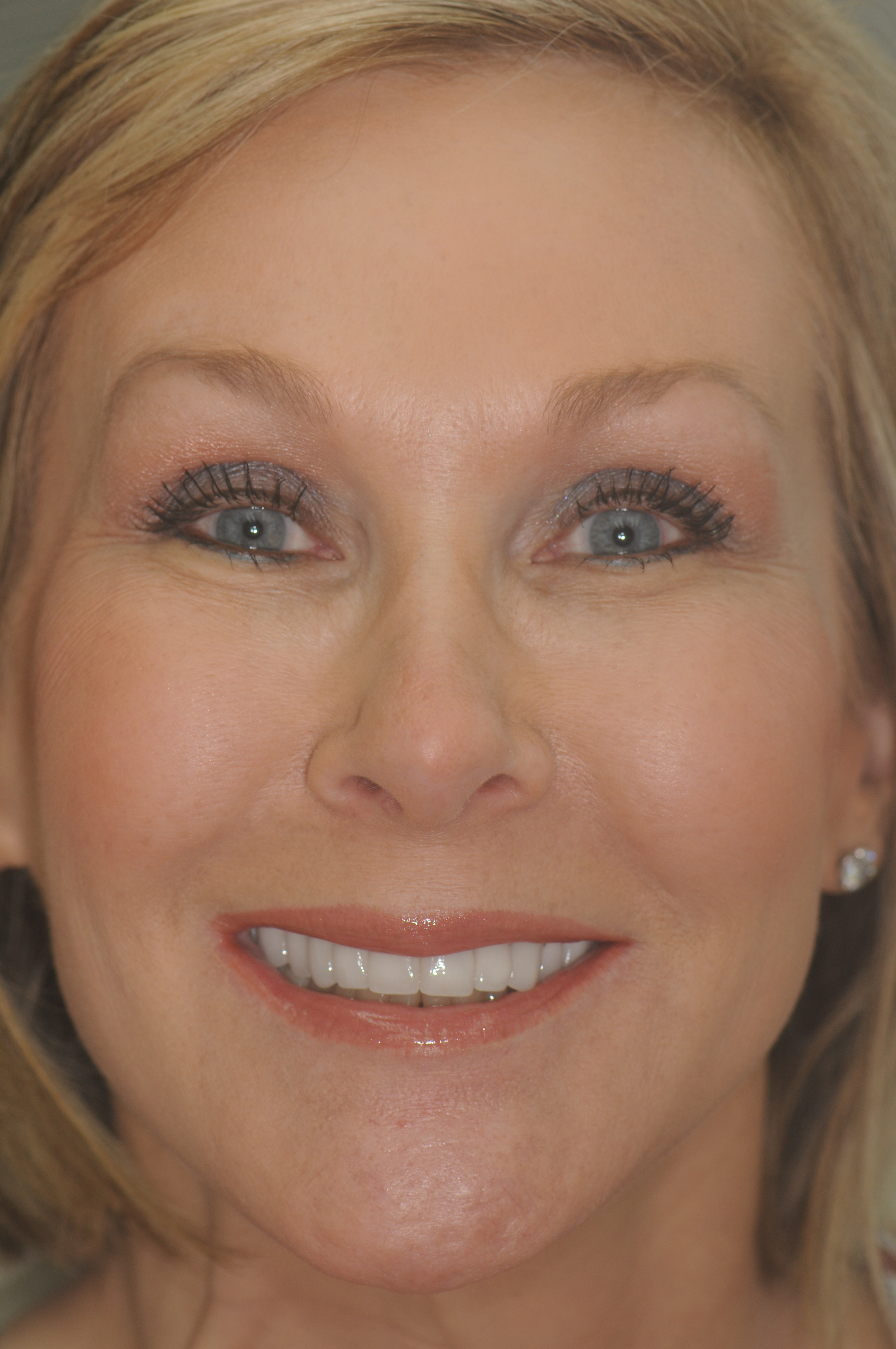
Figure 1
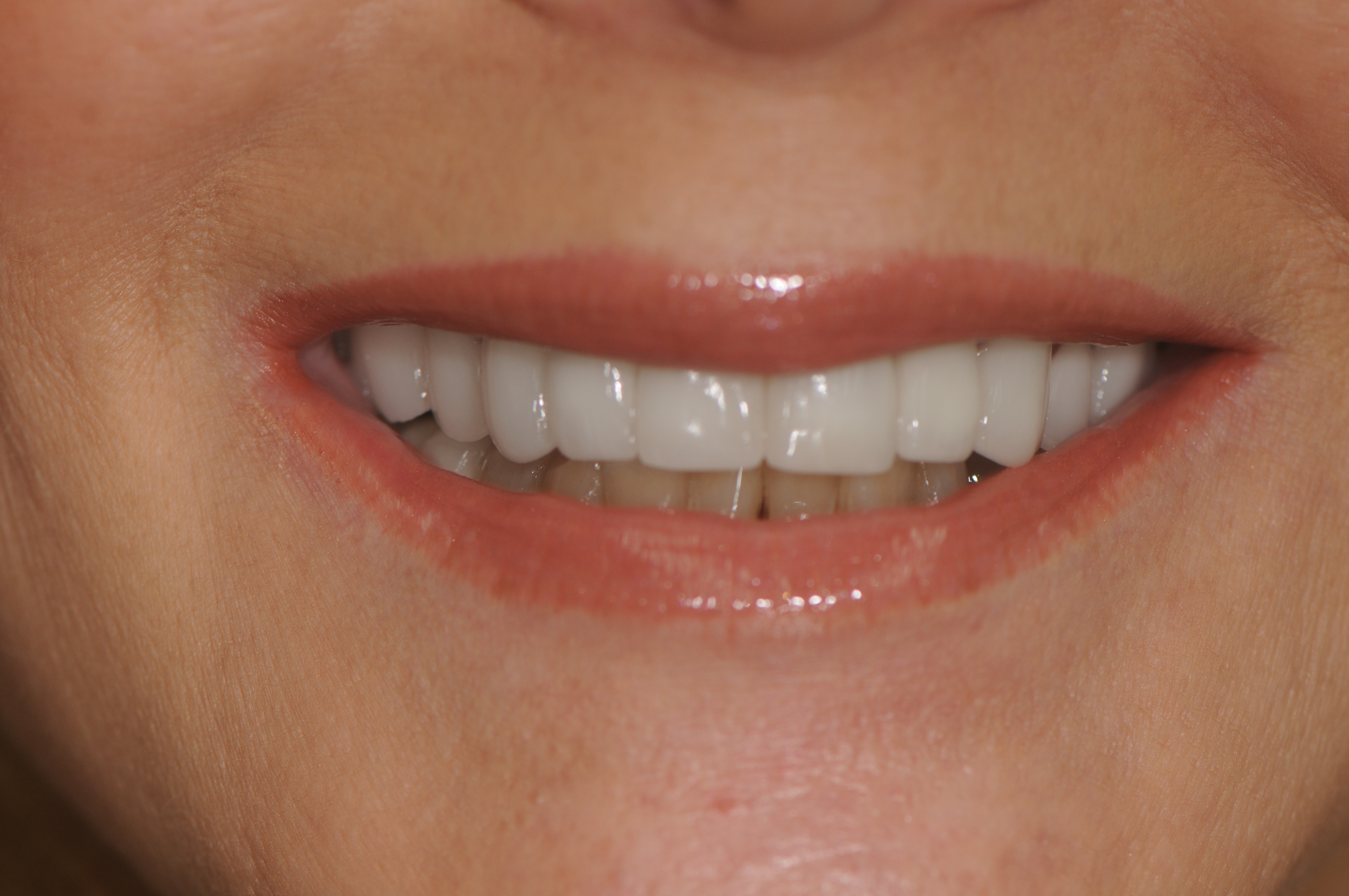
Figure 2
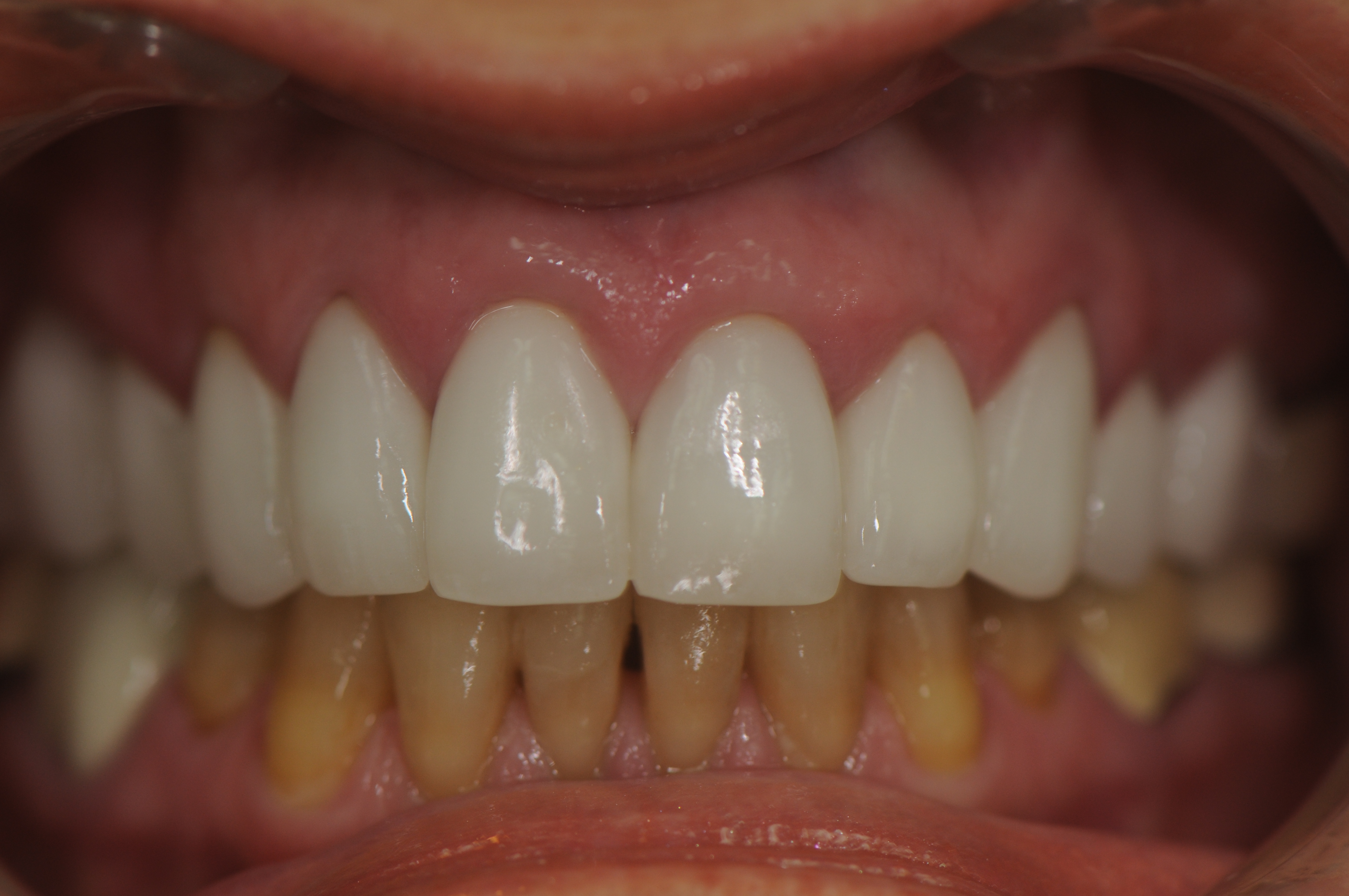
Figure 3
A 52-year-old female presented for a consultation because she was unhappy with her smile which had recently been restored by her dentist with 10 porcelain crowns on teeth #’s 4-13.(Fig. 1-3) She said she was okay with the color but there was something about her smile that didn’t seem right. When it was pointed out to her that the incisal edges of the restorations were flat and even she said that was in fact what she didn’t like. The patient was shown before and after pictures demonstrating the benefits of a consonant smile arc and was also offered the opportunity to view the difference with a direct composite mock-up. After agreeing to the suggestion of a mock-up, a flowable composite was placed right on the restorations (#’s 7-10) and shaped so the incisal edges instead of being straight across would parallel the lower lip curvature (Fig 4 ).

Figure 4
After seeing the mock-up, the patient expressed an interest in beginning treatment and in order to be as conservative as possible, the decision was made to restore teeth #’s 7-10 with veneers instead of cutting off crowns that were less than a year old. By restoring only four teeth with veneers, the primary goal of improving the smile arc could be accomplished (as demonstrated by the mock-up), while also limiting the patient’s expense. It is possible to bond porcelain to porcelain in the mouth and obtain high bond strengths, but the prepped porcelain must first be treated with hydrofluoric acid and silane before bonding the veneers (Figs 5-6). Both preparation of the porcelain crowns and cementation of the four porcelain veneers followed the protocols taught in the live patient hands-on programs of the Pacific Aesthetic Continuum. Since a local anesthetic was not necessary, the patient was able to view her new smile immediately after cementation of the veneers and was very pleased with the final result which was accomplished with a conservative treatment plan and the understanding of a very important smile design principle, the smile arc. (Figs 7-8)
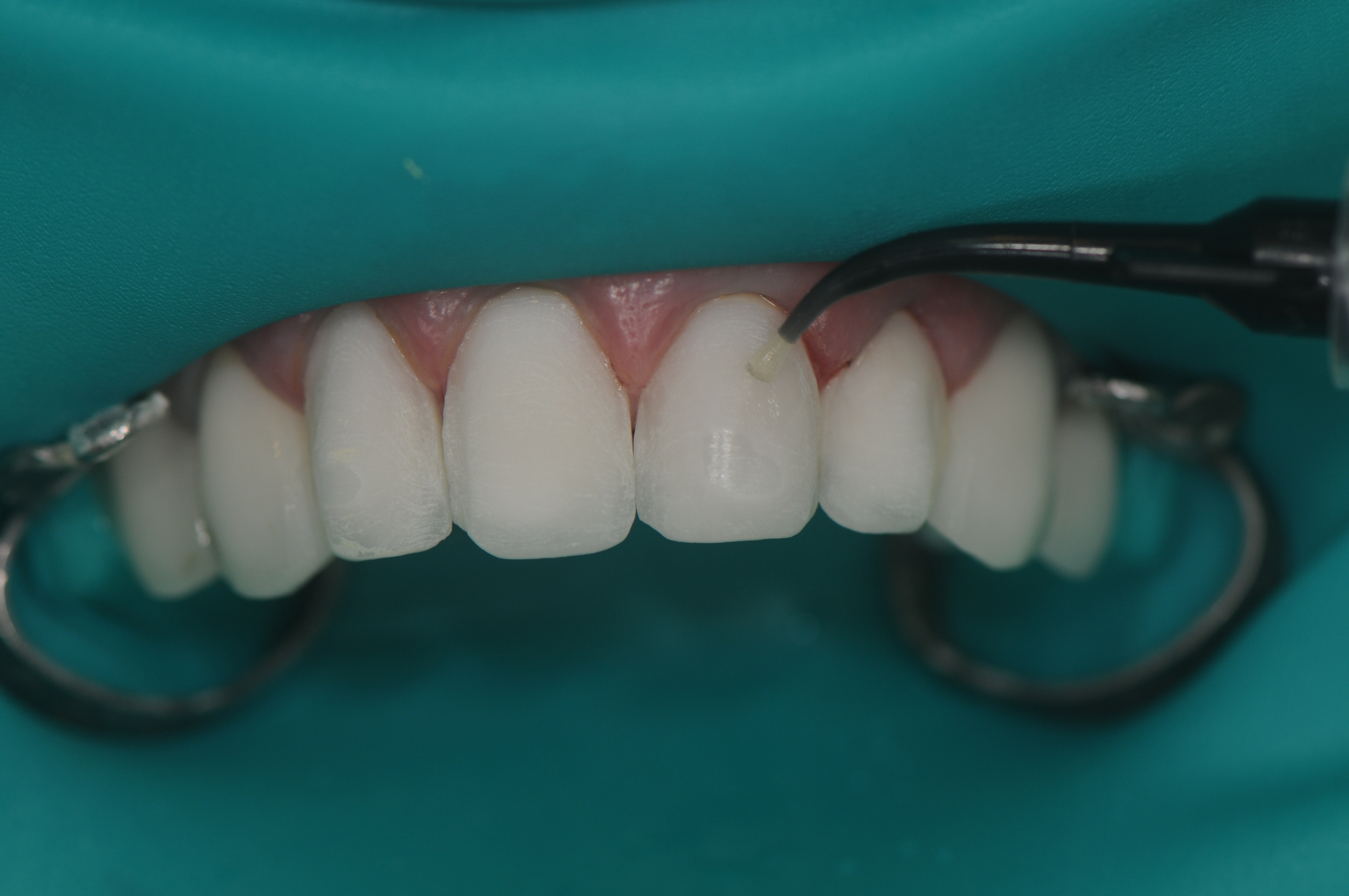
Figure 5
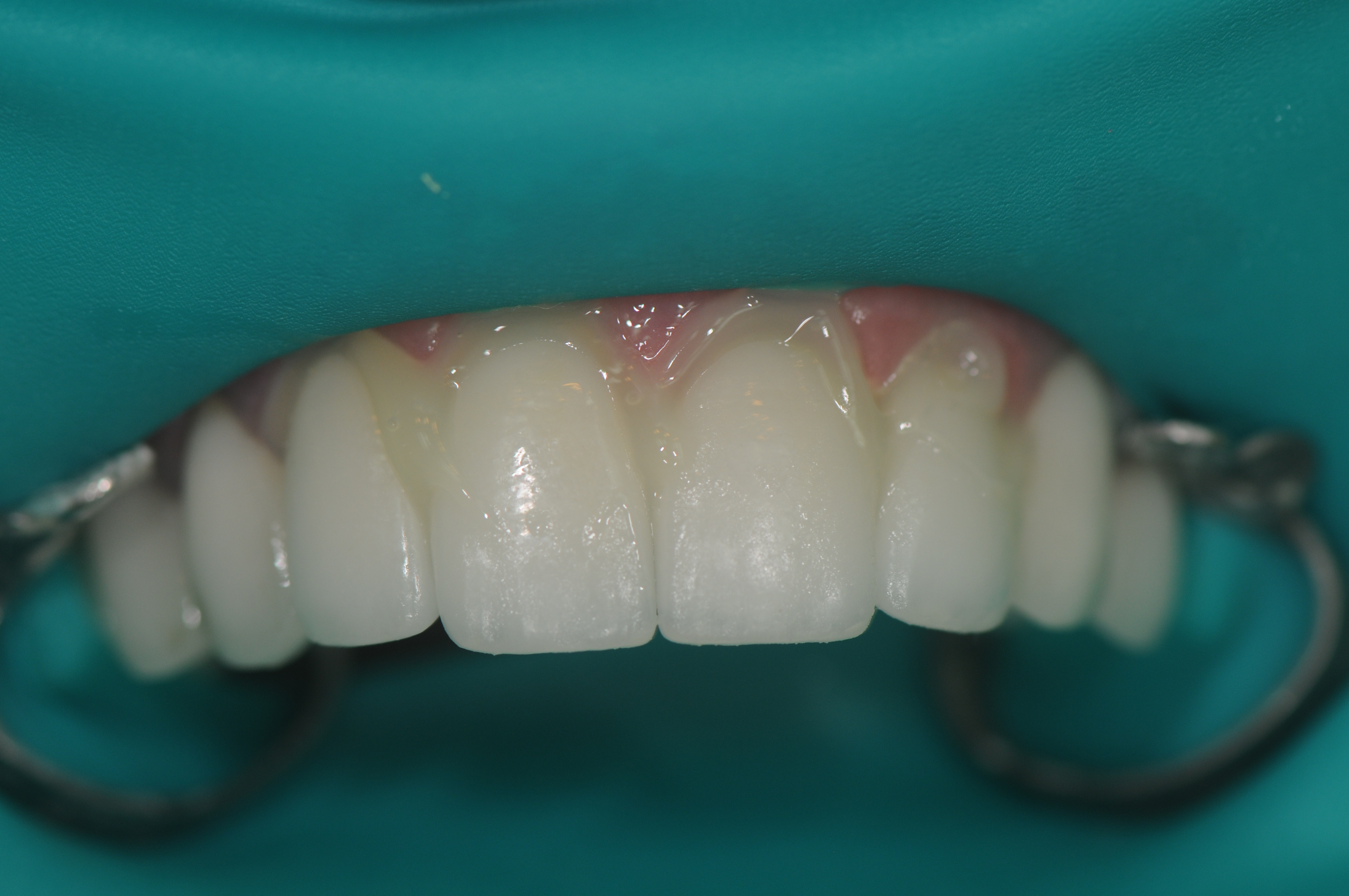
Figure 6
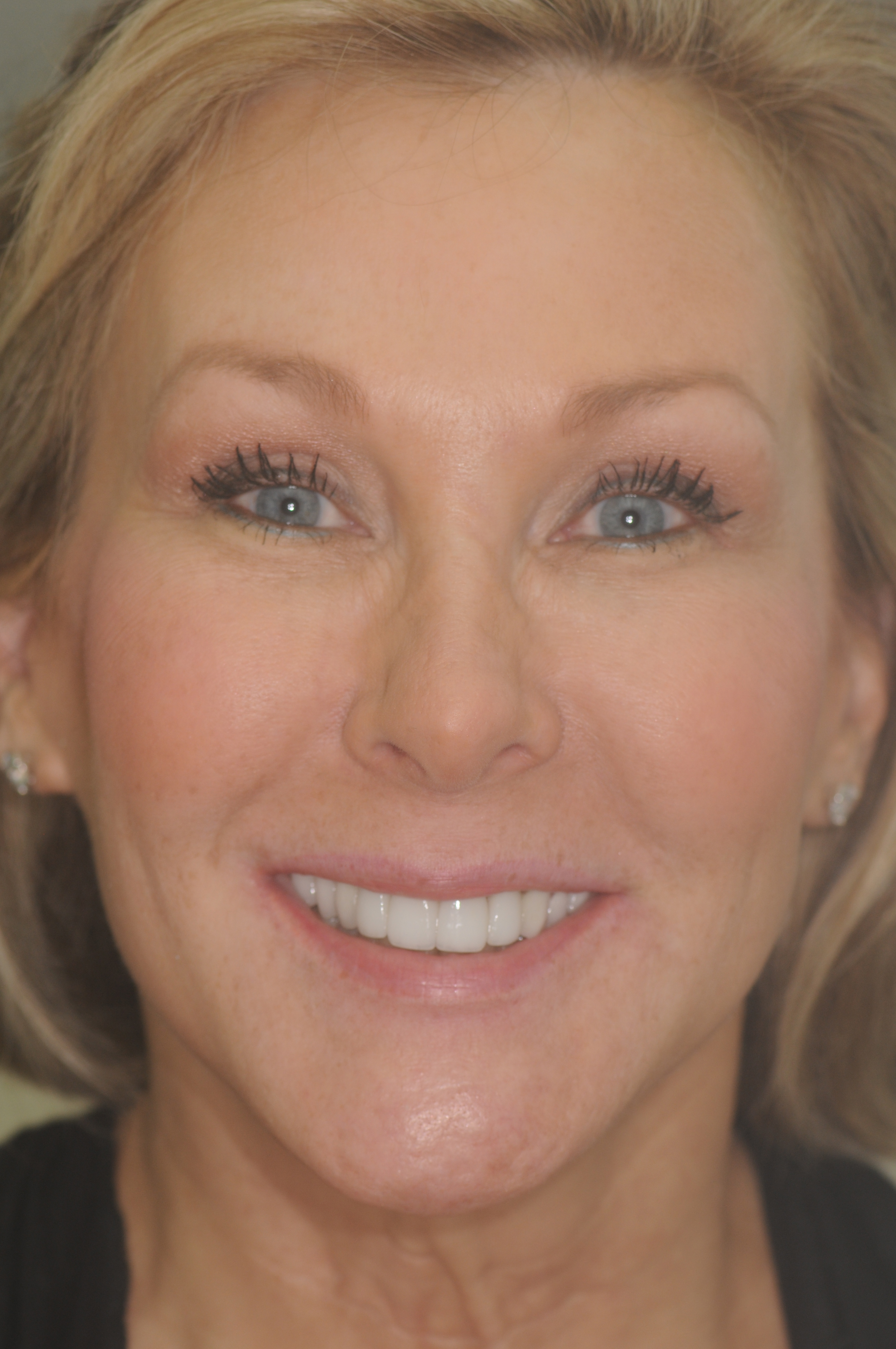
Figure 7
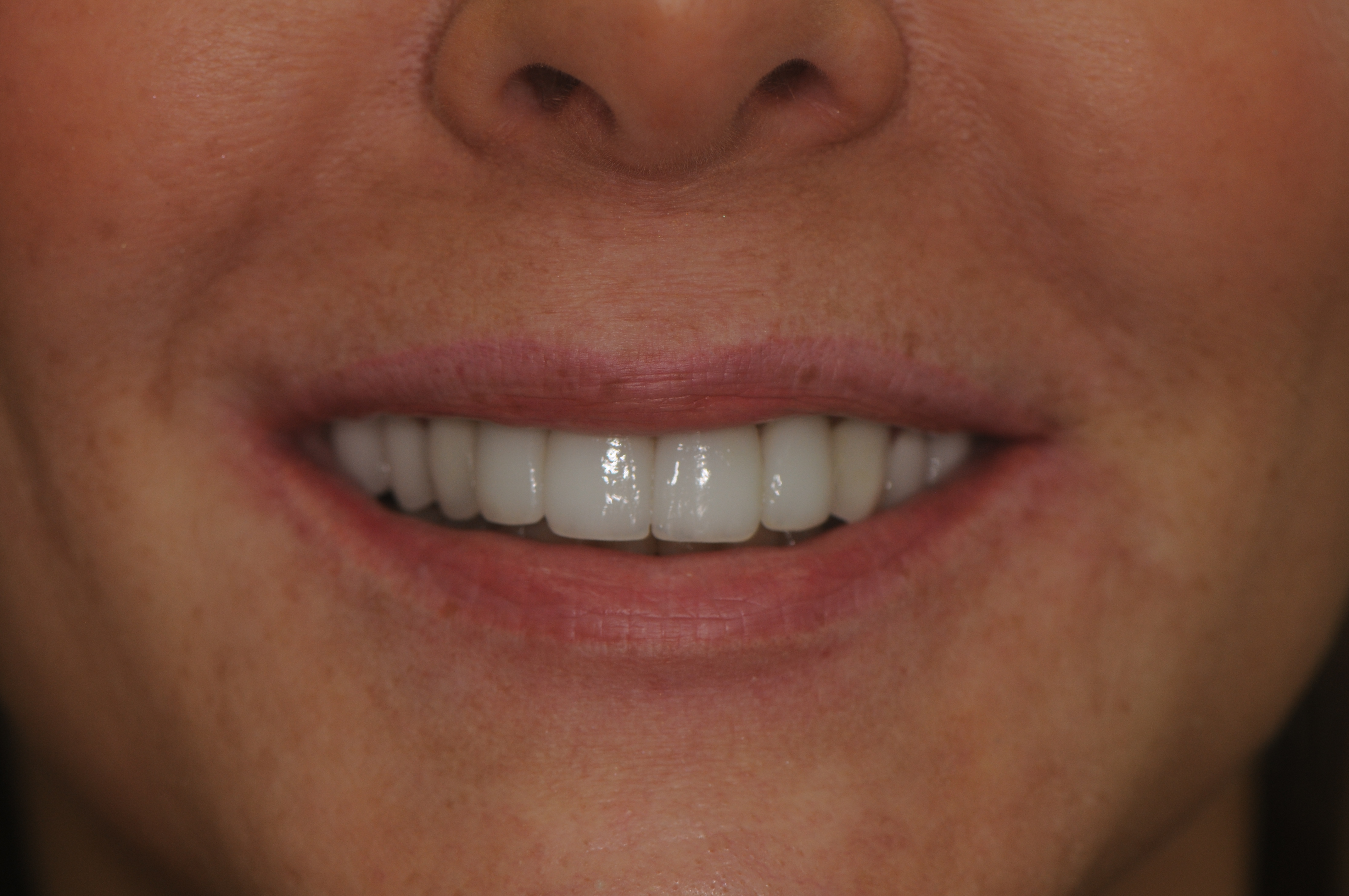
Figure 8
Patient satisfaction, in this case, would not have been possible without the efforts of Gary Vaughn and the entire Corr Dental Design Team.
If you have questions about my article or if you would like to send a case, please contact the Pacific Aesthetic Laboratory Group at www.pacificaestheticdentalstudio.com, Gary Vaughn, CDT, CTO, (888) 461-3331, or via email [email protected].
Fig. 1 Full face smile before
Fig. 2 Close up smile before
Fig. 3 Retracted view before
Fig. 4 Direct composite mock-up
Fig. 5 Silane placed on etched porcelain
Fig. 6 Veneers placed with excess cement before clean-up
Fig. 7 Immediate post-op full face smile
Fig. 8 Immediate post-op close up smile
